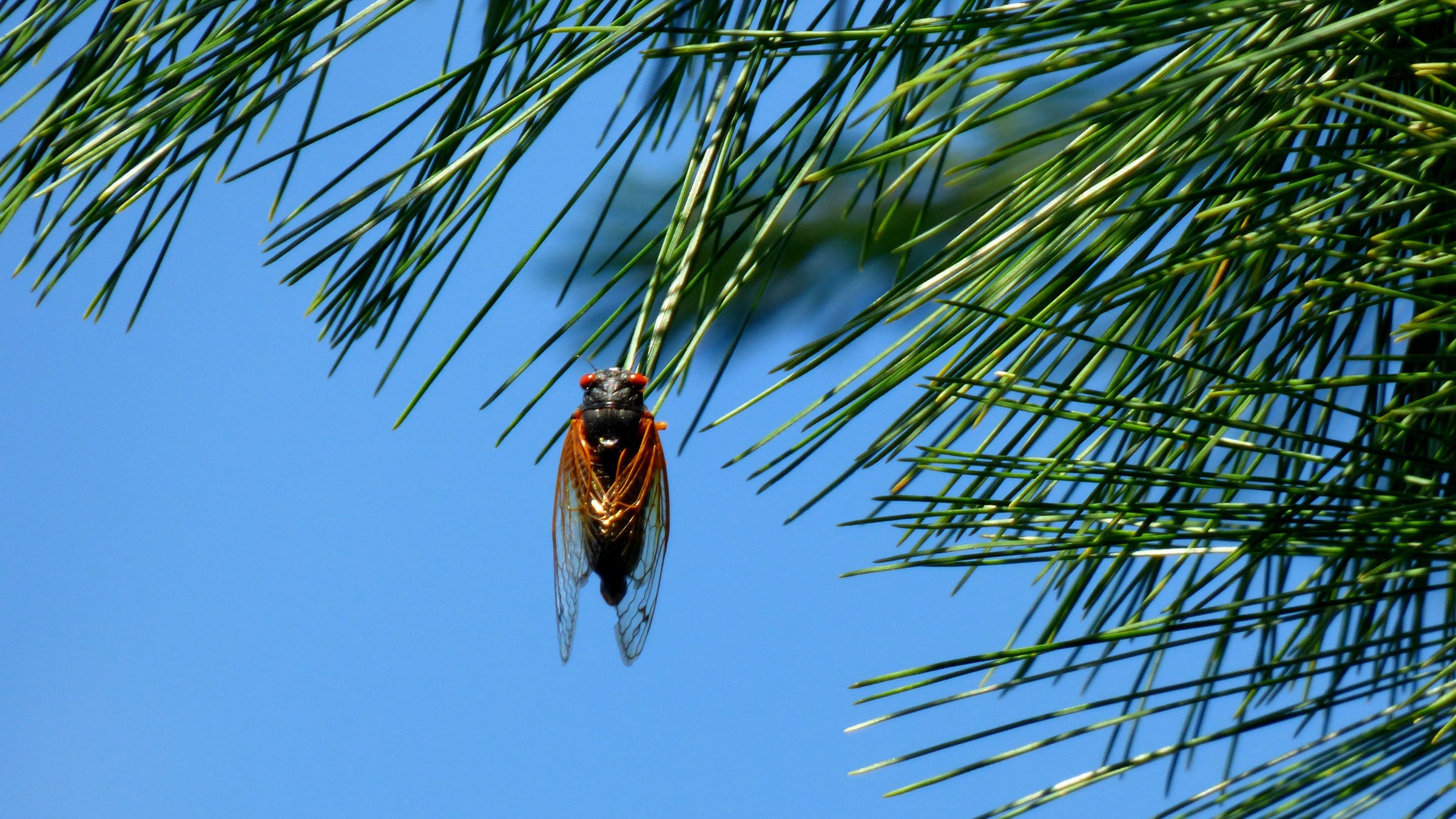What's the Buzz About Cicadas? Here's Where Hikers Can See This Spring's Insect Horde

Cicada (Photo: Laura Gilchrist)
The cicadas are coming.
Across swathes of the eastern US, the bumbling nymphs of Brood X are crawling en masse out of the burrows they’ve lived in for the past 17 years, anchoring themselves to trees and splitting open their old exoskeletons to emerge as winged-but-still-bumbling adults. But while it may seem like an annoyance if you’re the one sweeping them up—or even a nightmare if you’re afraid of bugs—there’s something indubitably special about this relatively rare phenomenon, too.
Like sea turtles’ nesting season or caribou herds’ migrations, periodical cicada broods are one of nature’s more impressive sights, the kind of mass event that makes you feel like you’ve glimpsed the machinery of Earth’s ecosystem at work. They spent almost two decades underground, emerging for just a few weeks at the end of their lifecycle to mate, lay eggs, and die.
What’s the Big Deal With This Year’s Cicadas?
Yes, Santa’s reindeer are gobsmacking and baby turtles are really cute, so you’re probably wondering how in the world swarms of thumb-size insects are worth hiking to. I saw the swarms in action when I was a teenager living in northern Illinois, so, let me enlighten you. When 17-year cicadas emerge, the bugs are inescapable, entertaining, a wonder of nature, and ultimately harmless. They fly through the air, bonking into tent walls and landing on hikers; if you try to go swimming at a lake or watering hole, you’ll end up flicking bug after bug off your bare skin as they perch, looking for a place to rest. Whole forests emanate the white noise of a cicada chorus. When they start to die off, they litter the ground so thickly that homeowners sometimes have to sweep them away with brooms. (Gross, yes, but also pretty impressive.)
Ecologically, they’re a bountiful food source, and even animals that don’t normally eat insects will change their patterns of behavior to take advantage of them. Dogs snack on them, birds pick them off the ground, frogs gulp them down. I’ve even seen chipmunks nibbling on cicadas like acorns, turning the bugs around in their tiny paws. In short, when they show up, for a little while, they transform the look, feel, and function of their environment.
Where Can I See the 17-Year Cicadas?
A lot of different factors can affect periodical cicadas’ development, so its tough for scientists to predict where they’ll emerge with any kind of precision. Because they spend most of their lives living around trees’ roots, disturbance to their habitat can knock out populations. Still, it’s possible to make some educated guesses based on previous broods. Your sweet spot this year will be the central and eastern Midwest, parts of the south, and the Mid-Atlantic. Look for areas of undeveloped forest—state parks, national forests, local reserves—or hit up one of these three destinations.
Hoosier National Forest, Indiana
Located in southern Indiana’s hill country, this national forest protects just over 200,000 acres of classic midwestern oak forest and prairie across four separate units. Because it’s been spared from development or potentially nymph-harming chemicals, it’s a likely spot to catch the bugs. See the best of the scenery and hopefully a few cicadas on the 12.4-mile Two Lakes Loop, which crosses a pair of streams and winds along the shores of two hill-country lakes along the way.
Bender Mountain Nature Preserve, Ohio
Located near Cincinnati, Bender Mountain isn’t what you’d call deep wilderness, but it should be a prime spot to encounter cicadas this year. Get to know it on the 2.3-mile Bender Mountain Loop Trail, which winds across the tops of the hills overlooking the broad Ohio River. Besides the insects of the moment, the park is famous for its native wildflowers, including cream-and-violet blue-eyed Mary, yellow trout lily, and deep crimson red trillium, all emerging in spring.
Appalachian Trail, Pennsylvania
Researchers predict that southeastern Pennsylvania will be a prime spot to see emerging cicadas this year, and the state’s portion of the Appalachian Trail cuts right through ground zero. You should be able to see them along a large portion of the path, but the 7.7-mile Sunset Rocks Trail, which leads to a rocky promontory with great views of the surrounding area, is a particularly worthwhile jaunt.
How Can I Eat Them?
Yes, you can eat them, and stop making that face. Cicadas are meaty, protein-rich, and non-toxic, and they don’t bite, which makes them a snap to catch. (Anecdotal evidence suggests that they can trigger allergic reactions in people with shellfish allergies, so if that’s you, use caution; insects can also carry parasites, so always cook them before you eat.) Enthusiasts say that cicadas taste like nuts. One Backpacker staffer who experienced a 17-year cicada hatch in southeast Ohio even ate them on a pizza.
Find out for yourself: Collect newly-emerged cicadas in the morning, when low temperatures leave them sluggish. (The Forest Service may require permits to collect them, depending on how many you’re planning on taking. Check with your local land managers to confirm the rules.) Remove the legs and wings—they’re safe to eat, but you don’t want to pick them out of your teeth later. Toss a splash of oil in a pan, add the cicadas, and fry them for ten minutes or until they’re well cooked. Salt to taste and enjoy on their own or in your trail mix.